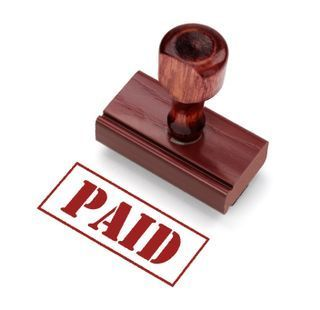 In our current economic recession, medical practices across the nation are facing ever increasing bad debt from their patients. With an average of 10% unemployment, high foreclosure rates, never-to-return jobs, and high insurance deductibles, patients are avoiding paying their doctor bills, and more and more patients are being sent to collections. But there is an easy way to reduce patient bad debt starting today.
In our current economic recession, medical practices across the nation are facing ever increasing bad debt from their patients. With an average of 10% unemployment, high foreclosure rates, never-to-return jobs, and high insurance deductibles, patients are avoiding paying their doctor bills, and more and more patients are being sent to collections. But there is an easy way to reduce patient bad debt starting today.
It’s typical to have to chase down payment from patients, but you can prevent bad debt by qualifying patients before treatment. This is now easy and instant with real-time insurance eligibility verification right in the office. Front desk employees can verify a patient’s insurance coverage and co-pays quickly and easily for any plan before the provider ever sees the patient. If necessary, payment plans can be arranged prior to the patient leaving the office.
A switch to this front-end model of collecting is easy to maneuver with a little staff training and foresight. There are “tricks of the trade” for collecting insurance reimbursements, but there are also “tricks of the trade” for collecting patient balances, and providers do have some control in the matter.
All too often, when we perform billing reviews for prospective clients, we see outrageously high patient receivables. The reason for this is usually that the practice is not collecting co-pays at the time of service. From a business point of view, it’s expensive to collect old balances, but you can reduce your initial risk and reduce write-offs and collections by collecting those copays at the time of service. It’s your money—this method requires a little more foresight, but it’s easier to reduce those write-offs by collecting at the time of service.
Every business is better off having cash rather than accounts receivable. Front desk staff should always try to collect previous and current balances when face to face with the patient. Patients are much more inclined to pay for services while at the office versus at home when balancing all the other household bills. The provider may need to regularly guide front desk or check out desk staff to ensure these collections are performed until the staff is sufficiently trained, but these tricks of the trade for collecting can be learned easily with regular practice. Collecting co-pays at the time of service increases cash flow. And on the expense side, collecting co-pays reduces the costs associated with sending patient statements and the inherent delays associated with collecting funds. It’s that simple, and there is no reason why your practice can’t start implementing these new methods today.











